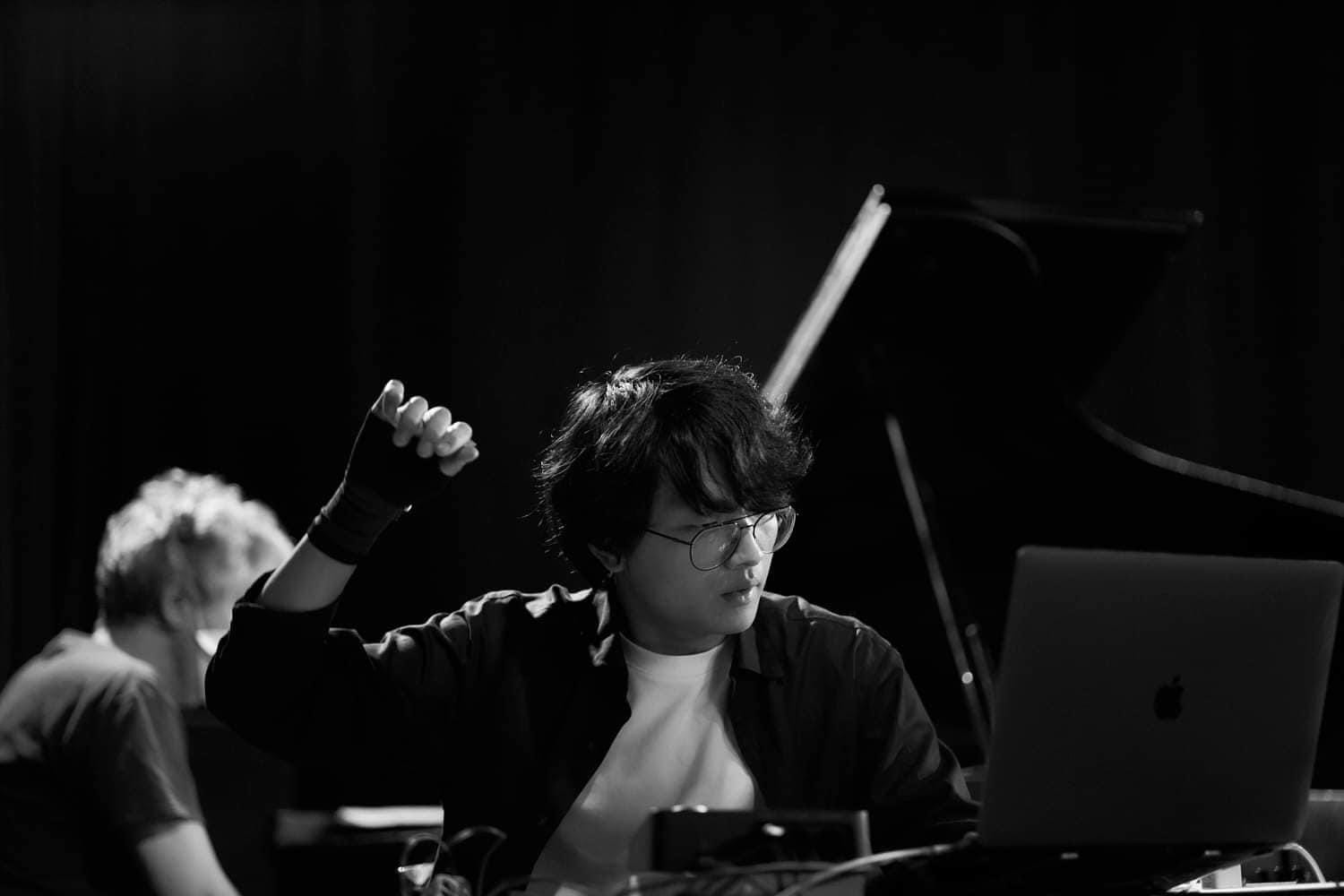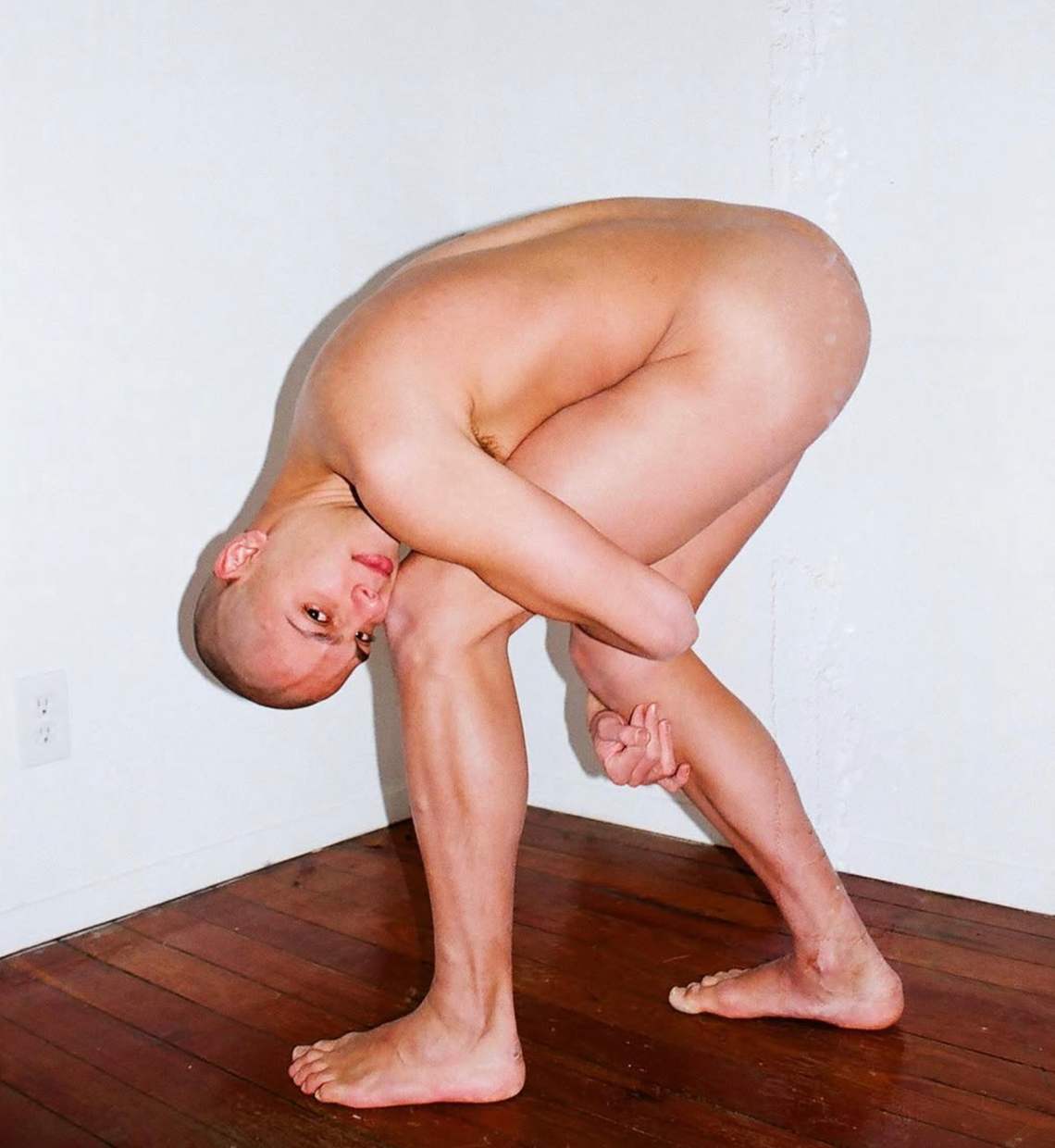At 7:30 pm on Frida,y June 6th, 2025, Shinya Lin showcased “Steinway vs Fazioli” as the 19th chapter in the ongoing series “My Dinner with Morgan at Remedy Diner” by Yoshiko Chuma and The School of Hardknocks. The concert was held inside the piano store Klavierhaus, located in Hell's Kitchen.
The piece showcased two pianists: Shinya Lin, the composer of the piece, and Hans Young Binter, who sat across from each other on separate pianos, one being a Steinway and the other an Italian Fazioli. There was a clear use of chance operations in the form of a coin toss and ringing a dinner bell. The use of the bell seemingly referenced a chess bell, referring to the two pianists being in a duel of sorts. Two speakers, Hsin-Yu Chen and Anna Fortuna, sat close to the audience. Hsin-Yu spoke in Chinese while Anna spoke in English. Both had a strange speech pattern. Words were occasionally elongated, syllables would be taken out or added. It sounded as if a machine were learning to speak for the first time; intelligence awakening.
Dancers and choreographers Yoshiko Chuma and Dennis O’Connor joined the visual layout about 20 minutes into the piece. Both dancers created angular shapes and glided through the space. At times, the movement had a light and jovial quality. At other times, Yoshiko would confront the audience, glaring directly into an individual.
Audience participation was also a large component of the piece. Borbo, who usually performs as a clown, would select audience members to place an “order” on a menu.
The piece had an abrupt finish. The small, intimate audience erupted in applause.
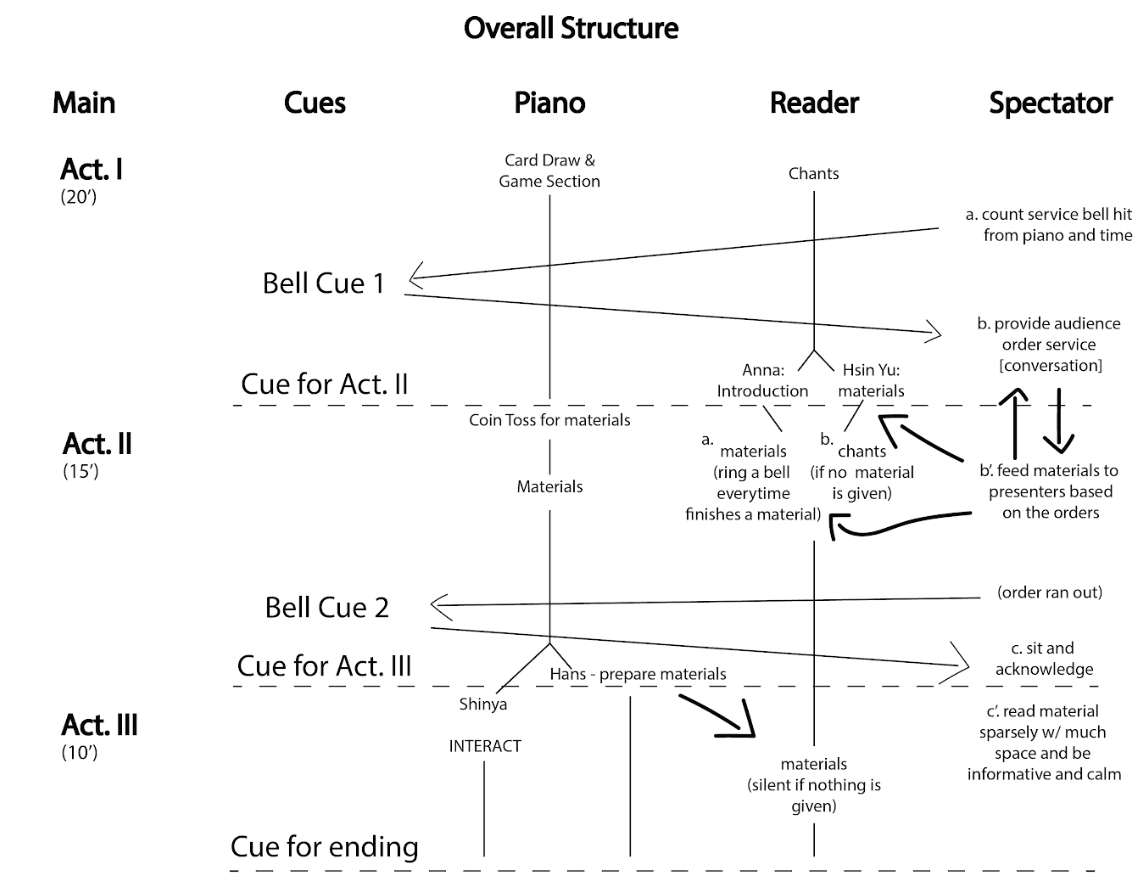
I sat down with Shinya a week after the concert at a cafe in Tribeca. It was a rainy spring day.
Iris Sewell: How did this piece come to be?
Shinya Lin: Well, before I started planning for this piece, I met Yoshiko Chuma. She has been in New York for 50 years and has personal relationships with some very historically significant artists. People like John Cage, Merce Cunningham, Philip Glass, and Alex Katz. We met while playing at the InGardens Festival held by the nonprofit organization Arts for Art. Yoshiko runs the collective The School of Hardknocks.
This concert was part of her series “My Dinner with Morgan at Remedy Diner.”
Yoshiko Chuma has an ongoing series in which she presents and curates improvised performances featuring dance, live music, and theatrics. “My Dinner with Morgan at Remedy Diner” was inspired by Yoshiko’s late friend, Morgan Jenness.
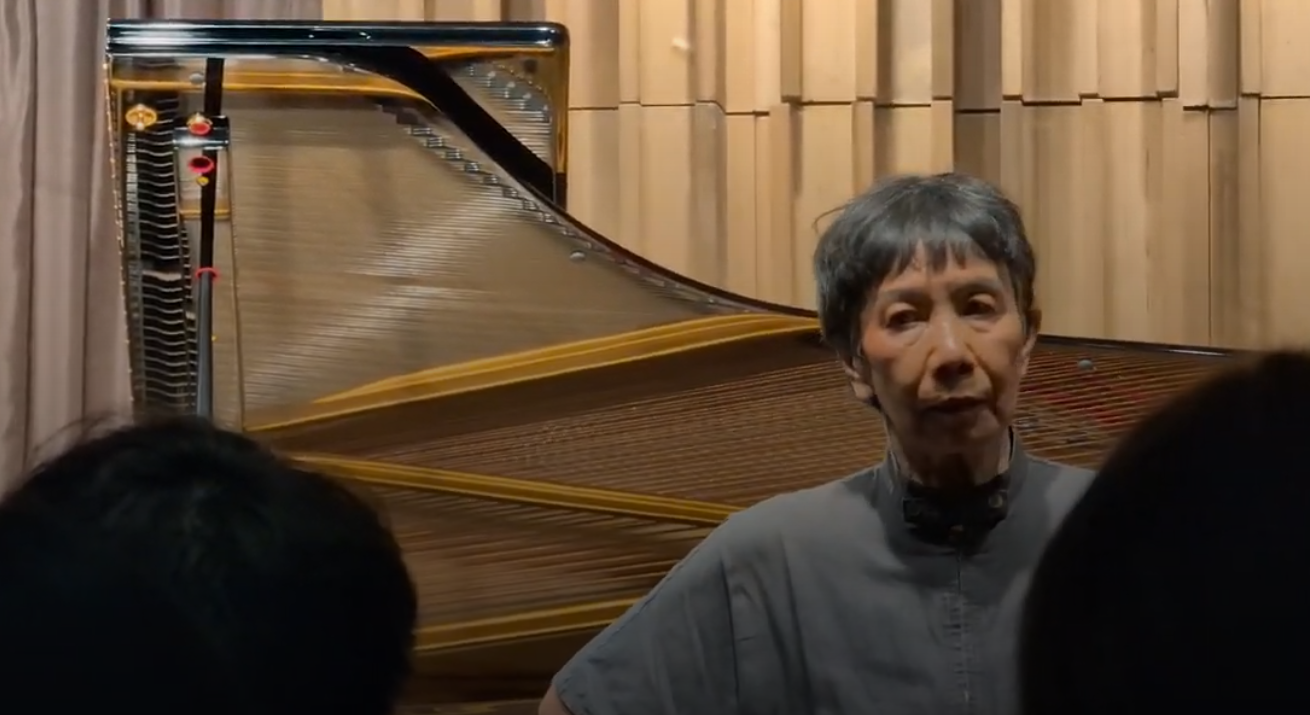
SL: Yoshiko asked me if I wanted to participate in her series 3 weeks prior. The whole thing was a bit rushed. Half of this is Yoshiko’s concept, but it was curated and composed by me. She had said “don't ask me what to do and don't tell me what you're gonna do,” and so I didn't until the week of the show.
When we were choosing a location, she said, “Oh, do you want to work at this piano store?”
I performed there once, and it was the first time Yoshiko had heard about it. We went there together and really liked the place. We saw that they had a Fazioli. Faziolis are rarely seen in the states. Steinway has factories in the states, but Fazioli comes from Italy. It’s a really high-end piano and not common in the U.S. and so I wanted to take advantage of that.
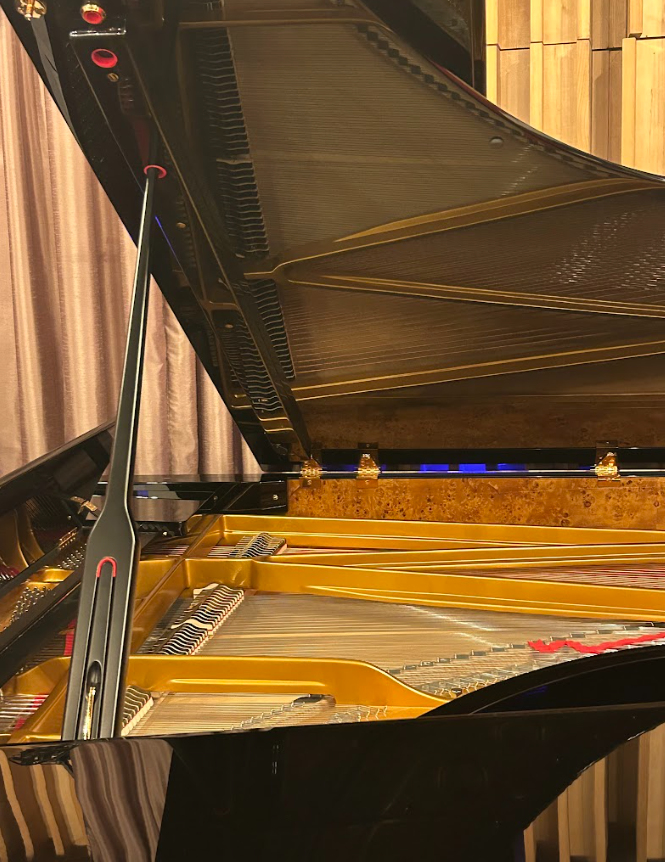
IS: What was it like working with dancers?
SL: It was really cool working with dancers. I was really honored that Yoshiko asked me… I had never really played with choreographers before in a performance setting. I have seen concerts with that discipline. It was a new step for me. Something opened.
It was also an honor to work with Yoshiko and Dennis in general. Dennis danced with Merce Cunningham many times. He danced with John Cage. Cage is one of my biggest inspirations for my work and my practice. Hearing stories from him and about Cage was incredible. It reminded me of the reason I moved to New York.
IS: How was this piece structured?
SL: This whole piece can be treated as a small society. There are lots of things going on and everyone plays their part, but they are not always directly working with each other. Like you don’t need to talk to people on the street, but you can tell them to fuck off if you really want to. That is the theme of this piece.
John Zorn, another influence of Shinya, has a piece called “Cobra” that is composed as a game. Zorn has intentionally never released the rules to the specific game for Cobra; however, this style of music making has been used numerous times. Zorn also referred to music acting as a "small society."
SL: A big inspiration for the speaking was, again, John Cage. There are lots of things he does with text - like Roaratorio and The Ten Thousand Things. Conceptually, I treated the speaking part as sonic materials. I treated the speaking like a piano or singing. There is a person speaking in Chinese, Hsin-Yu. If you don't know Chinese, you can still hear it. You have this aural perception that you perceive the sound and maybe you have some connection to its tone or emotion. The way we implemented the tone and cadence of the text was with coin tosses.
This technique of leaving things up to a coin toss or to fate is referred to as “Chance Operations.” This term was popularized among visual artists and composers such as John Cage during the Dada-Neo-Dada movement. It is clear even in the design of the piece how much John Cage inspires Shinya.
SL: The coin tosses told us how many letters to use, when to make cuts in sentences and paragraphs. Which syllable, which letter, and then that was added to the first section of text. If I show you, it might be easier:

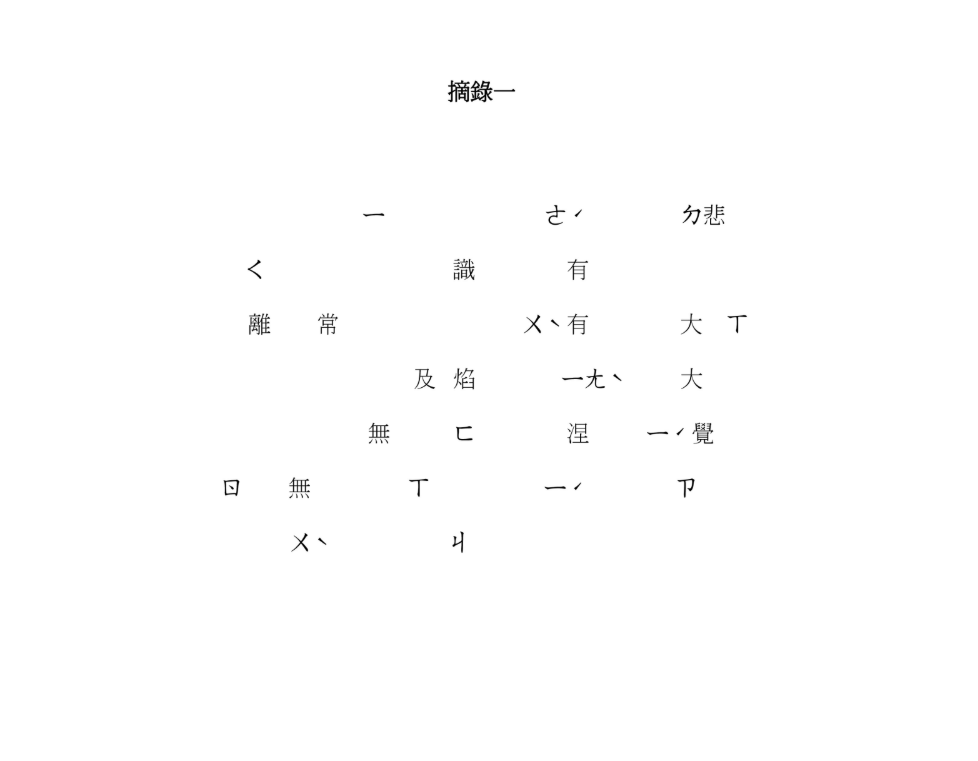
“… words and syllables. Words and syllables...” - Shinya Lin
IS: What is being said in the Chinese text?
SL: Some of the materials actually came from John Cage’s diary. Cage used The I Ching. The translation is “the book of changes.” It's one of the ancient Chinese texts, also known as 'Zhou Yi', where, among three of the documents, the other two were lost. I am very into ancient Chinese texts on humanities and history. The speaker, Hsin-Yu, practices Buddhism, so he's been chanting for a while. And this material is from 楞伽經(Lankavatara sutra). It’s another ancient Buddhist text of teaching. This is from my studies. I have many ancient Chinese books. This text is more directly related to Buddhism.
IS: Are you Buddhist?
SL: My parents are, I just studied it… for me, it wasn't a religious practice ever. For my parents, they are more into the religious part; you have to do certain routines to practice. For me, I read the ancient texts that were preserved before being translated, institutionalized or traditionalized… so that's more like a lifestyle. It's more like the perceptions of the worlds- between the worlds and the self. It's more about nature. No religious constrictions. More like concepts on how to live life.
Most of the time, my work is like… life informative stuff. That's how I think of it. What I experience in my life informs me. Like ubiquitous music. It's a term that basically says anything you perceive *someone yells twice* like that (referring to the yell) is music. Or it can be music if you choose to be aware of it. I engage a lot with what is surrounding me and learn and feel from the life I live itself.
IS: This sounds like a very Buddhist way of practicing music.
We laugh
SL: Ya…There is a thing called 方便法門 (fāng biàn fǎ mén). It's kind of hard to translate into direct English, but it basically means “the convenience method of practice.” That is to say, whatever works with you the best. Like a sixth sense - you have hearing, seeing, smelling, taste, touch, but then also your mind. That's the sixth sense. Any of those can be your practice. For me, it's hearing because I have been practicing sounds for so long so for me it's super straightforward. To hear things and then to practice from the perception of listening.
There is a culture among artists of needing to constantly produce. People have described a sense of needing to squeeze art and creation out of you. It is refreshing to hear this point of view on creation and artistic practice. Often, the most effective art was created from a space of ease.
IS: What was being said in the English text?
SL: The material that Anna is using in the later section is from a book of a series of immigrant stories, “We Built New York”, during the 70s or 80s. The stories are from Chinese residents living in Chinatown, particularly. I did an artist residency at The Museum of Chinese in America, so I had the chance to visit their archive. They have lots of documents that are related to immigrants, and it's all super dark, and it's never mentioned nowadays. Like very racist shit.
Shinya laughs awkwardly..
SL: Um… in the 19th century, they had to go through lots of physical checks, having to be naked and stand in lines… like slavery a little. Getting tortured, all of that, essentially the same thing. So I had the chance to look at those things, and I decided I wanted to put that into music.
IS: What is your experience as a Chinese person living in America?
Shinya groans at the question.
SL: Oh my god. *laughs* This is a big topic… it's fucked *laughs* Being an asian person in the states is fucked. I would say that America is a very racist country, even though I am now a part of it. I have an American passport. So I'm a part of this racist community *laughs*... I mean… an easy example is no one can even pronounce our names correctly, and that is fine because it's not in English, but people don't even try. We all have “American names” that we decide when we are in elementary school, and it's just interesting that there is that cultural racism even in China and Taiwan, where we are being given American names so young.
It can also be hard to get people to recognize you, and that is a major thing in the arts… To get grants, to get opportunities. Nowadays, it's all pay to win. You have to pay the PR and spread your name all over the industry so people can be like, “Oh, I see this name here and there.”
I love putting Chinese influence into my work. Being Chinese is a huge part of who I am. At the same time, I can't put a bunch of Chinese text on all of my posters and in my applications because no one will know what is going on. Because I am here. I'm not in Taiwan or China… so that's just a small thing that sucks. I can still contribute by background and my culture, but I can’t just be like “fuck you, I'm staying in my culture.”

IS: Do you miss China?
Shinya pauses for a moment.
SL: I… *laughs* this is a complicated topic. So I was stuck here for 10 years because… immigration. I had a Taiwanese passport, but it is mandatory there to serve in the military. I did not serve in the military, and I do not intend to. So…I cannot go back to Taiwan. But I can go to China.
I got my American passport last year, so I was finally free. I went to China last December. It was super… I had mixed feelings… In China, there isn't too much freedom culturally, but living there has so much… comfort. It's super quiet compared to New York. It is illegal to honk in certain neighborhoods. And even when you do honk, the volume is super soft. The ambulance, the firetrucks; even those sound a bit softer. In China, I have time for my brain. My mental health is more calm in China, so I have more time to think about the sounds I want to hear. In New York, my head is just filled.
Silence is a part of music. Music is just a term for us to better communicate what we are referring to. Music is just a term to describe a phenomenon. Music is what you experience in the aftermath… It's a term to describe something that has passed. Music to me is a constant, ongoing, aural perception. So that means when the sounds translate to literal music, those sounds are already in the past. Music is always in the past.
Silence is ongoing music. Silence is an ongoing aural perception. Like, if I don't finish this sentence, you won't-

- You would be guessing. If I finish it, then your logical mind has processed it, and what is processed is in the past. So, ya music to me is just a superficial perception.
I like to constantly absorb whatever is going on, even now: Bird calling, car driving, rainy day…
Shinya Lin is the director of his own experimental music company, Chaospace, alongside his friend and collaborator, Yue Chen. You can follow Shinya’s work on Instagram @shinya_side_effect and on his website https://www.shinyalin.com/
Credits
Composer & Pianist: Shinya Lin
Pianist: Hans Young Bitner
Dancers: Yoshiko Chuma and Denis O’Connor
Readers: Hsin-Yu Chen and Anna Fortuna
Spectator: Borbo
